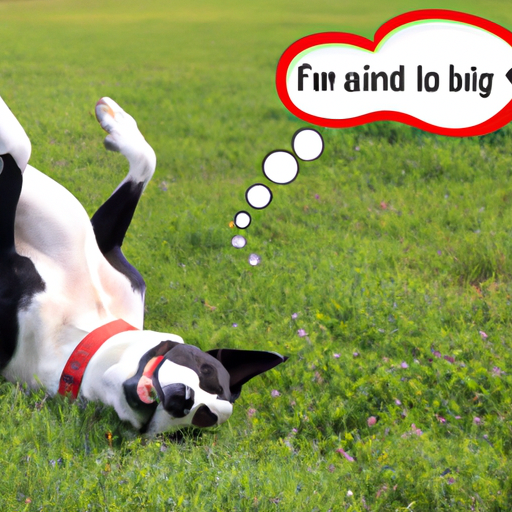You’ve seen it happen countless times: Your trusty canine companion breaks into a sudden sprint, flings themselves onto the grass, and begins rolling around with wild abandon. But why, you wonder, do dogs roll on their back in grass? This whimsical behavior, while amusing, can leave many pet owners scratching their heads.
H2: Understanding Your Dog’s Behavior
Understanding your dog’s behavior can feel like a daunting task. Their actions, however, are often rooted in their instincts and communication methods.
Communication and Marking
Dogs possess a set of glands in their skin that produce unique scents. When your dog rolls on their back in the grass, they might be trying to deposit their scent, marking their territory.
Sensory Experience
Dogs, like humans, enjoy sensory experiences. The feel of grass against their fur and skin can be a pleasant sensation. Rolling in the grass can be a way for them to enjoy the texture and temperature of their environment.
Itching and Comfort
For dogs, rolling in the grass is often a practical measure to relieve itching or discomfort. This action can help them reach spots that their paws can’t.
H2: The Role Of Instincts
One cannot discuss dog behavior without addressing their instincts. A dog rolling on its back in the grass could be a display of these inherent behaviors.
Predator Evasion
In the wild, dogs use rolling as a tactic to evade predators. By rolling, they mask their scent with the smells of their surroundings, making it harder for predators to track them.
Hunting Habits
Dogs are natural hunters. Rolling in the grass might be a way for dogs to cover themselves in the scent of potential prey, allowing them to sneak up on their target more effectively.
H2: The Health Implications
While it’s usually a harmless activity, rolling in the grass can sometimes indicate health issues.
Parasites
If your dog is rolling in the grass excessively, they might be dealing with parasites. Fleas and ticks can cause itchiness, leading to this behavior.
Skin Conditions
Skin conditions can also lead to excessive rolling. Allergies, dry skin, or infections can cause discomfort that your dog tries to alleviate by rolling in the grass.
Anxiety and Stress
Stress or anxiety can manifest through a variety of behaviors, including rolling in the grass. If accompanied by other signs of anxiety, it might be worth discussing with your vet.
H2: Managing Your Dog’s Grass-Rolling Behavior
While generally harmless, there might be times when you need to manage your dog’s grass-rolling behavior.
- Preventive Healthcare: Regular vet check-ups can help identify any underlying health issues causing excessive rolling.
- Training: Teaching your dog the “leave it” command can be handy when you want to prevent them from rolling in the grass.
- Environment Control: If your dog has allergies, controlling their environment can help mitigate symptoms.
H2: FAQ
Here are some frequently asked questions about why dogs roll on their back in grass:
-
Is it safe for my dog to roll in the grass?
Yes, it’s generally safe. However, be aware of potential hazards like pesticides, ticks and sharp objects in the grass. -
Should I stop my dog from rolling in the grass?
Unless your dog is allergic to grass or the grass area is unsafe, there’s no need to stop them. -
My dog rolls in the grass after a bath, why?
Your dog might be trying to replace the scent of the shampoo with a more familiar scent. -
What should I do if my dog rolls in something harmful?
If your dog rolls in something harmful, it’s recommended to wash them immediately and consult your vet if needed.
So, the next time you see your dog rolling in the grass, remember – they are simply being dogs, enjoying their environment, and expressing their instincts. As their caregiver, you can ensure they do so safely and healthily.



